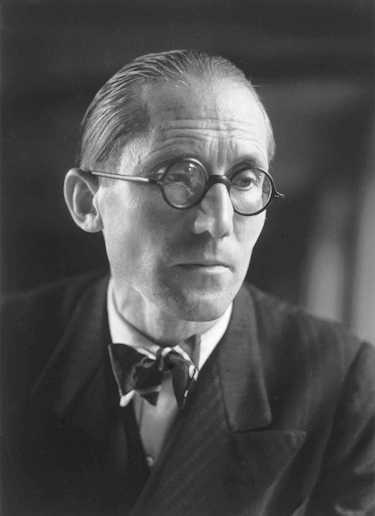Dr SS Bhatti
Now that the Capitol Complex has got UNESCO world heritage status and Chandigarh been selected for development as a smart city, the powers that be will do well to study Le Corbusier’s written word to avoid deviating from the original concept in the heat of enthusiasm for introducing large-scale hi-tech gadgetry. This piece should put then in touch with the man who remains unknown despite his renown.
The name ‘Le Corbusier’ may be synonymous with the City Beautiful yet not many know the magnificence and magnitude of his real genius that made him the 20th century’s greatest architect.
Poor receptivity to his epoch-making ideas and indifference created frustrations for him. Therefore, it was not without reason that when PN Thapar and PL Varma, chief administrator and chief engineer of Chandigarh Capital Project, first met Le Corbusier in Paris in the winter of 1950, he was disappointed and cynical. Only three years earlier, he had declared his “despair” noting: “Men are so stupid that I’m glad I’m going to die. All my life people have tried to crush me. First, they called me a dirty engineer; then a painter who tried to be an architect; then an architect who tried to paint; then a communist; then a Fascist. Luckily, I’ve always had an iron will.”
Advent into India
Charles-Edouard Jeanneret-Gris had dropped his given name to assume in 1920 the pseudonym ‘Le Corbusier’(literally, The Crow!), an alter ego.
That Le Corbusier’s appointment as Architectural Adviser to the Punjab Government for the Chandigarh Capital Project was fortuitous can be seen in his teammate Maxwell Fry’s report: “At our first meeting with Thapar and Varma, they asked for two architects to organise and supervise the architectural aspects of the Mayer plan. If Jane Drew and I had been able to drop every other obligation and accept the appointments, Corbusier would not have been approached.”
The situation, which prevailed at that point of time, was described by Fry thus: “We had laid it down as a condition that we would not work under engineers, as was the custom in the Indian Public Works Department. I was experiencing the onset of a trial of strength with Varma, neglect by Thapar, and a general feeling of lassitude in the organisation, the reverse of my experience in Africa. Not wanting to waste my efforts, I put in a resignation to Thapar that brought him hot foot... So I stayed…The arrival of Corbusier galvanised the situation.”
Chandigarh and beyond
Le Corbusier’s association meant much more than the building of a new capital for the Punjab state. It marked the birth of a unique organisational set-up for the Indian architectural fraternity.
He portrayed the team that built Chandigarh in his own landmark caricature which shows him as a ‘crow’, his cousin Pierre Jeanneret as a domestic cock, Maxwell Fry as a dog, and Jane Drew as a goat. This art-work should establish once for all that Le Corbusier had no associate as many lesser mortals claim to be and misguide the public and the persons in power.
Empathic creativity
On one of his visits to the Secretariat building under construction, he discovered some charcoal sketches on the walls of the building’s giant ramp. This was the art of one of the donkey-drivers who had been employed to carry away excavated earth. Le Corbusier honoured him in absentia by ordering the architectural staff to make tracings of the anonymous iconographs. These he later used widely as wall bas-reliefs in the buildings which he designed. Le Corbusier was so enamoured of the technical virtuosity of Giani Rattan Singh that he had him appointed as a model-maker in the Department of Architecture.
Leaving the mortal world
On August 27, 1965, Le Corbusier went for a swim in the Mediterranean Sea at Roquebrune-Cap-Martin, France. His body was found by bathers. His last rites took place at the Louvre Palace on September 1, 1965 and he was buried alongside his wife, a Monaco model, in the grave he had designated at Roquebrune.
(The author is founder-teacher and former principal, College of Architecture, Chandigarh)
Unlock Exclusive Insights with The Tribune Premium
Take your experience further with Premium access.
Thought-provoking Opinions, Expert Analysis, In-depth Insights and other Member Only Benefits
Already a Member? Sign In Now










